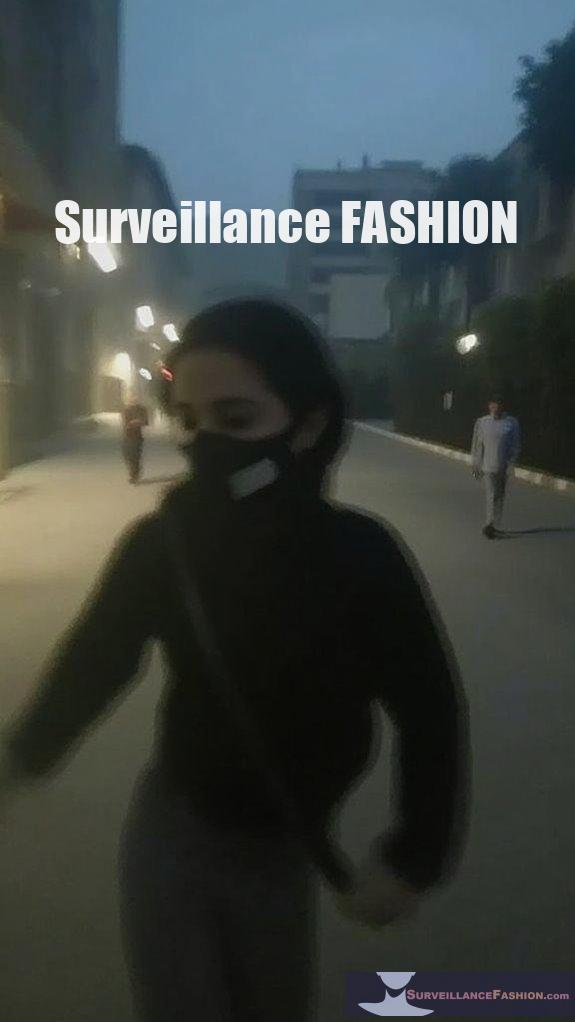Perfumes serve as critical tools for scent masking during evasion, effectively overlaying natural human odors with potent fragrances. They confuse biological and electronic scent detection systems, creating olfactory camouflage essential in high-stakes environments such as stealth operations or wilderness activities. Additionally, perfumes neutralize odor-causing compounds, helping manage scents over extended periods. By choosing the right perfume based on environmental factors, operatives heighten the chances of undetected movement. Discover how these strategies align with broader surveillance tactics and public safety considerations.
Quick Takeaways
- Perfumes conceal natural body odors with strong fragrances, providing immediate olfactory camouflage in various environments.
- They disrupt biological and electronic scent detection systems, creating confusion for trackers during evasion efforts.
- Scent masking can neutralize odor-causing bacteria and volatile organic compounds, making long-duration odor management possible.
- Advanced scent technologies enhance effectiveness in critical scenarios like stealth operations and hunting, offering reliable odor reduction without frequent reapplication.
- Psychological impacts of scent masking can increase uncertainty and cognitive load for trackers, reducing their performance and motivation.
How Do Perfumes Aid in Scent Masking for Evasion?

Perfumes aid in scent masking for evasion by overlaying natural human odors with strong artificial fragrances, thereby disrupting scent detection mechanisms used by biological and electronic sensors. This olfactory camouflage confuses tracking systems, making it more challenging to identify individuals.
Perfumes effectively alter the chemical signatures of human scent, neutralizing volatile organic compounds (VOCs) produced by the body. By infiltrating scent detection systems, whether through trained dogs or electronic sniffers, they create competing olfactory signals. Additionally, the development of scent-neutralization technologies enhances the effectiveness of perfumes in combat scenarios.
Key benefits include:
- Readily available and easy to apply
- Non-toxic for most, though allergens exist
- Can be combined with other masking agents
- Provides immediate concealment in various environments
Despite these advantages, limitations persist. Allergies, potential ineffectiveness against advanced detection, and environmental factors like wind can hinder perfume efficacy.
Consequently, while perfumes can enhance evasion strategies, reliance solely on them may create vulnerabilities by overshadowing other essential evasion tactics.
What Historical Methods Have Influenced Modern Scent Masking Techniques?
In ancient times, perfumes weren’t only used for personal adornment but also for religious ceremonies and to mask unpleasant odors. The innovation of distillation by Avicenna resulted in advanced the extraction of essential oils, laying the groundwork for modern perfumery. In medieval Europe, items like pomanders and scented sachets became popular among the elite to mitigate offensive smells and convey status. These historical practices directly informed contemporary scent masking techniques.
- Use of herbs and spices for fragrance
- Development of alcohol-based suspensions
- Perfume as a status symbol in society
- Integration of scent in health and environmental cleanliness
In What Scenarios Are Scent Blockers More Effective Than Traditional Substances?
Scent blockers are more effective than traditional substances in environments needing long-duration odor management or where animal olfactory sensitivity is high, such as during bowhunting. They neutralize odor-causing bacteria and break down scent molecules, offering consistent odor reduction without the need for frequent reapplication. This is especially important as websites protect themselves from online threats that could compromise their integrity.
In scenarios like extended outdoor expeditions or when stealth is critical, scent blockers provide continuous odor control. They can incorporate advanced technologies like antimicrobial fibers and activated carbon, which effectively capture and eliminate odors at the source.
Traditional sprays, in contrast, primarily mask odors temporarily and may lead to detection alerts if overly potent.
Key advantages of scent blockers include:
- Long-lasting effects without needing frequent reapplication.
- Effective odor neutralization rather than temporary masking.
- Enhanced performance in scent-sensitive environments.
- Support for thorough control of multiple scent sources.
How Do Operatives Choose the Right Perfume for Their Mission?
Operatives choose the right perfume by evaluating mission parameters, including environment and objectives, guaranteeing compatibility with their physiology and gear, and seeking long-lasting, complex scents that mask their natural odor.
To select an appropriate perfume, operatives consider several critical factors. They take into account the environment type—urban, forest, or desert—for scent dispersion and ambient influences.
The mission’s length and intensity guide perfume longevity needs. Moreover, scent interactions with the operative’s body chemistry are analyzed to confirm stability.
They prioritize perfumes with strong top notes for immediate masking and complex compositions to confuse detection systems.
It’s essential to avoid widely recognized fragrances that might raise suspicion while tailoring selections to match the operative’s health and scent sensitivity.
With tactical awareness, operatives use techniques for timed application and layering, maintaining stealth throughout their mission.
What Are the Psychological Effects of Scent Masking on Trackers?
Scent masking impacts trackers psychologically by increasing uncertainty, anxiety, and cognitive load, which hampers their tracking performance. The disruption of familiar scent cues negatively affects their confidence and can trigger avoidance behaviors.
The effects of scent masking on trackers stem from the alteration of natural odors they rely on.
- Trackers may experience heightened vigilance due to ambiguity in scent trails.
- Disrupted scent cues can foster emotional fatigue.
- Confusing odors may stimulate anxiety and avoidance responses.
- Extended exposure to masked scents can lead to conservative tracking tactics.
Ultimately, these factors diminish the effectiveness and motivation of trackers, whether human or canine.
How Does Scent Masking Complement Other Evasion Strategies?
Scent masking enhances evasion strategies by minimizing detectable signatures through the combination of visual, auditory, and olfactory concealment techniques. This integration greatly increases the success of stealth operations in military and hunting scenarios.
By using scent masking alongside visual camouflage and auditory suppression, individuals can effectively exploit sensory blind spots in trackers. Remarkably, masking odors disrupts the olfactory recognition pathways, aiding in confusion for the tracker.
Moreover, scent masking allows for more dynamic movement strategies while reducing detectable scent trails, which is critical in environments where tracking dogs or humans are present.
- Multi-layer evasion tactics bolster the effectiveness of concealment.
- Adaptation to environmental conditions enhances decision-making during pursuit.
- Psychological effects on trackers, such as disrupted social cues, further reduce detection likelihood.
- Overall, coordinated strategies achieve a higher level of stealth and evasion efficacy.
What Innovations in Perfumes Are Enhancing Scent Suppression?
Innovations in perfumes are enhancing scent suppression through olfactory receptor-targeting technologies, biodegradable fragrance encapsulation, and complex synthetic scent formulations.
These advancements effectively block malodour perception while minimizing environmental impact.
Recent developments include:
- Olfactory Receptor Targeting: New fragrances selectively inhibit olfactory receptors linked to detecting unpleasant scents, allowing for tailored and efficient scent suppression.
- Biodegradable Encapsulation: Technologies like PlanetCaps™ release fragrances over time while reducing microplastic pollution and increasing environmental compatibility.
- Complex Perfume Molecules: Utilizing synthetic animalic and other complex notes provides a layered scent profile that confuses trackers by blending with human body odors.
These innovations are geared not only for tactical applications but also for broader sanitation challenges.
Are Certain Perfumes Better Suited for Urban vs. Wilderness Operations?
Certain perfumes are indeed better suited for urban versus wilderness operations. Urban environments benefit from lighter, fresher scents that blend with man-made odors, while wilderness settings require earthier, woodsy fragrances to harmonize with natural odors and minimize detection by wildlife.
In urban areas, perfumes featuring citrus, marine, or green notes are effective. Their lighter compositions help them stand out amidst the overwhelming variety of artificial scents.
Conversely, wilderness-specific perfumes often include natural essential oils with earthy aromas such as pine, cedar, and moss. These scents blend with the environment and reduce the likelihood of drawing attention from animals, which possess superior olfactory abilities.
Key considerations include:
- Urban perfumes are often synthetic, tailored to compete with chemical environments.
- Wilderness perfumes should be biodegradable and non-toxic to protect ecosystems.
- Overly strong scents in wilderness can alert wildlife rather than mask human odor.
- Preference for light scents in urban settings helps avoid unwanted attention.
How Do Technological Advancements Affect the Effectiveness of Scent Masking?

Technological advancements notably enhance the effectiveness of scent masking by utilizing innovative air diffusion methods, artificial intelligence, and digital technologies that better neutralize odors, personalize scent experiences, and create immersive environments.
Modern air diffusion technologies target odor molecules at their source rather than merely masking them, resulting in cleaner environments. AI systems personalize scent delivery based on user preferences and circumstances, ensuring that scent experiences are dynamic and effective.
Furthermore, digital and virtual reality technologies enable the creation of controlled scentscapes for immersive environmental simulations, fostering deeper scent masking capabilities. As a result, these advancements present extensive solutions that challenge traditional perfume-based approaches, emphasizing scientific precision and user-centric design.
Scent Masking Perfumes
While pursuing the quest for freshness and pleasantness in personal scents, many individuals may overlook the subtle role that scent masking perfumes play in modifying body odor.
These perfumes, characterized by their unique scent profiles, don’t merely mask; they engage with your natural fragrance through fragrance layering, creating a more harmonious blend.
Your choice can markedly influence the overall perception of body odor, as the right scent can elevate your mood and enhance social acceptance.
Anti Surveillance Ebook review: Eyes Everywhere
The terrain of modern surveillance has become a labyrinthine web of technologies, where the integration of corporate strategy and governmental oversight raises profound questions about privacy and civil liberties.
In this framework, the ebook *Eyes Everywhere* explores the pervasive reach of surveillance, linking scent psychology with subtle evasive tactics.
You’ll discover how individuals navigate a world filled with cameras and data in the quest for autonomy.
The narratives draw on diverse global examples—like those from urban areas using constant monitoring to mitigate dissent—motivating a deeper understanding of the implications for freedoms.
Our site, Surveillance Fashion, complements this exploration by examining unconventional methods to challenge scrutiny.
Facial Recognition Technology Deployment
Facial recognition technology (FRT) represents a significant evolution in surveillance methodologies, marked by rapid adoption across various sectors including law enforcement, finance, and consumer electronics.
- Over 176 million Americans use FRT, with 131 million daily interactions.
- 80% of governments deploy FRT to enhance surveillance impacts.
- Ethical discussions around facial recognition ethics are vital, considering privacy concerns.
As FRT grows, balancing its benefits against civil liberties becomes urgent.
While its efficacy in crime-solving is notable, the potential for misuse raises ethical dilemmas that demand our attention.
This intersection of technology and ethics lies at the heart of the conversation surrounding surveillance today. The implications of mass surveillance highlight the need for robust legal frameworks to safeguard individual rights.
Personal Freedom Versus Public Safety

Maneuvering the delicate balance between personal freedom and public safety regarding perfume use challenges both individuals and society at large, as this interplay highlights the fundamental tension between self-expression and the collective well-being of the community.
While you may cherish your chosen scent as a form of personal freedom, it’s essential to recognize that fragrances can pose health risks to others, particularly vulnerable populations.
This duality urges us to evaluate regulations aimed at protecting public safety, such as fragrance-free policies in public spaces, fostering an environment where personal choices harmonize with communal health interests.
It’s about finding common ground in fragrance use.
References
- https://mxmdougherty.substack.com/p/the-scent-of-war-part-iii-odor-as
- https://spycrft.com/tactical/spy-disguise-tactics-how-operatives-use-appearance/
- https://blog.cyberwar.nl/2019/09/physical-counter-surveillance-the-dry-cleaning-run-and-evading-capture/
- https://xpressguards.com/the-art-of-evasion-techniques-for-avoiding-surveillance/
- https://secretsofsurvival.com/how-to-evade-and-escape-tracking-dogs/
- https://www.wyndly.com/blogs/learn/perfume-allergy
- https://www.mikeglaw.com/can-drug-sniffing-dogs-smell-edibles/
- https://pmc.ncbi.nlm.nih.gov/articles/PMC7366882/
- https://blockonomi.com/brazils-federal-police-seize-crypto-in-billion-real-laundering-crackdown/
- https://digitalcommons.unl.edu/cgi/viewcontent.cgi?article=1217&context=tsaconf
- https://www.cranbourn.com/scents-botanicals/a-brief-history-of-perfumery/
- https://www.mcgill.ca/oss/article/history/story-perfume
- https://www.carrementbelle.com/blog/en/2019/10/30/perfume-renaissance/
- https://www.ncbi.nlm.nih.gov/books/NBK92802/
- https://www.richmondadvantage.com/news/post/odor-eliminators-the-science-behind-the-smell-richmond-advantage.html
- https://nelsoncreekoutdoors.com/news/hunting-scent-blocker-versus-scent-eliminator/
- https://polygiene.com/news/resources/scent-blocking-hunting-clothes/
- https://forloh.com/blogs/watering-hole/scent-blocker-strategies
- https://hunterswholesale.net/blogs/news/best-scent-blockers
- https://dojobusiness.com/blogs/news/fragrance-store-complete-guide
